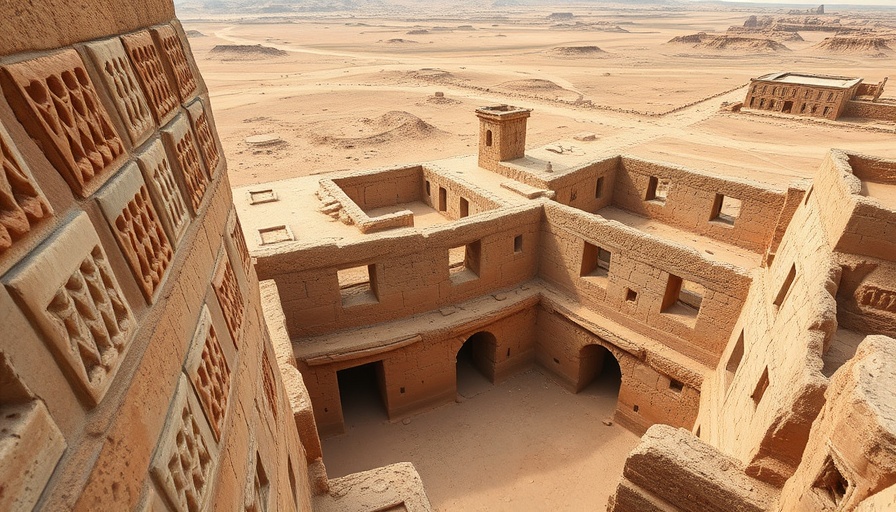
Understanding the Disturbance: Vandalism at Chan Chan
The archaeological site of Chan Chan in Peru, once a revered emblem of the Chimú culture, has suffered a shocking act of vandalism. This UNESCO World Heritage site was recently defaced with lewd graffiti, igniting a wave of public outrage and sparking conversations about the protection of cultural heritage.
The Cultural Significance of Chan Chan
Chan Chan, sprawling over 20 square kilometers, is recognized as the largest pre-Columbian city in America. Founded in the 9th century, it served as the capital of the Chimú civilization until the Inca conquest in the late 15th century. Its intricate adobe structures and expansive layout showcase the high level of architectural innovation and urban planning at the time. This site not only reflects the Chimú society's social and political organization but also its artistic achievements, further enhancing its value to global heritage.
Community Response: A Call to Action
The profound insult to such an important cultural symbol has evoked strong emotions among local communities and beyond. Activists are advocating for greater protection measures for archaeological sites, allowing preservation efforts to flourish and preventing similar incidents in the future. This incident serves as a reminder of the collective responsibility we hold towards protecting our heritage — a narrative that resonates deeply with communities everywhere, including in cities like Philadelphia, known for their rich histories.
Parallel Examples of Global Cultural Vandalism
This is not the first time cultural heritage has been compromised. Across the globe, archaeological sites have faced threats from vandalism, development, and natural deterioration. For example, the ancient city of Petra in Jordan and the Roman ruins in Pompeii have each seen their structures suffer from both environmental factors and human interference. This pattern raises alarms about what can be done to safeguard these timeless treasures.
Protecting Our Heritage: Future Trends
The Chan Chan incident is prompting advocates to push for innovative solutions to heritage management. Initiatives integrating technology — like drone surveillance and social media awareness campaigns — are proving crucial. By engaging the community and raising awareness, these strategies aim to foster a culture of respect towards cultural sites. Development projects designed with local heritage in mind could also help bridge modernity and preservation, fostering a sustainable future for cherished locations globally.
What You Can Do: Get Involved
For those touched by the world of culture and preservation, it’s vital to stay informed and engaged. Local fundraising events, volunteer opportunities at heritage sites, or educational programs can enhance community awareness and activism around the importance of protecting our shared history. Whether attending a local event or sharing posts on social media highlighting cultural significance, each action contributes to a larger movement dedicated to conservation.
Feelings and Reflections of Local Communities
The vandalism of Chan Chan strikes a deep emotional chord within local residents. This site is a symbol of their heritage and identity; witnessing its degradation can feel like a personal loss. Sharing stories, voicing concerns, and engaging in protests are all ways the community can channel their feelings, creating a collective resilience that emphasizes the importance of heritage as an integral part of life.
As we reflect on the news from Chan Chan, it’s a poignant reminder that preserving cultural heritage requires continuous vigilance and active participation. Every community should champion its history, ensuring that future generations inherit a rich and respectful understanding of their past.
 Add Row
Add Row  Add
Add 




Write A Comment